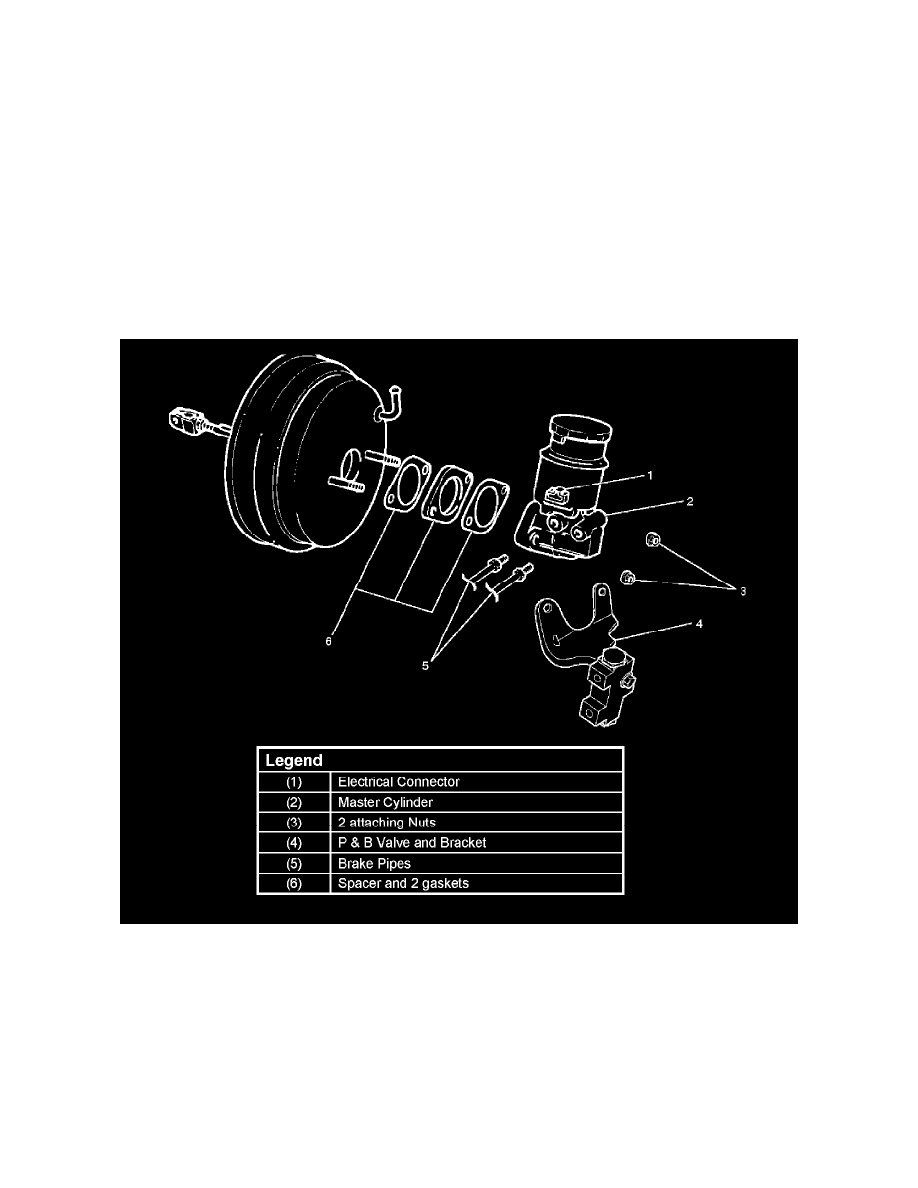Rodeo S 2WD L4-2.2L (1999)

Brake Master Cylinder: Service and Repair
Brake Master Cylinder
Filling the Master Cylinder
CAUTION: Use only specified brake fluid. Do not use any fluid which contains a petroleum base. Do not use a container which has been used for
petroleum based fluids or a container which is wet with water. Petroleum based fluid will cause swelling and distortion of rubber parts in the hydraulic
brake system. Water mixed with brake fluid lowers the fluid boiling point. Keep all fluid containers capped to prevent contamination.
Always fill the master cylinder reservoir when the engine is cold.
Never allow the brake fluid to come in contact with the painted surfaces.
The master cylinder reservoir must be kept properly filled to ensure adequate reserve and to prevent air and moisture from entering the hydraulic
system However, because of expansion due to heat absorbed from the brakes and the engine, the reservoir must not be overfilled. The brake fluid
reservoir is on the master cylinder, which is located under the hood on the left side of the cowl. Thoroughly clean reservoir cap before removal to
avoid getting dirt into reservoir. Remove the diaphragm. Add fluid as required to bring level to the "MAX" mark on the reservoir tank. Use "DOT 3"
Hydraulic Brake Fluid. If the fluid cap diaphragm is stretched, return it to the original position before installing.
Removal and Installation
REMOVAL
CAUTION: When removing the master cylinder from the vacuum booster, be sure to get rid of the internal negative pressure of the vacuum booster
(by, for instance, disconnecting the vacuum hose) in advance.
If any negative pressure remains in the vacuum booster, the piston may possibly come out when the master cylinder is being removed, letting the brake
fluid run out.
While removing the master cylinder, further, do not hold the piston as it can be easily pulled out.
Outside surface of the piston is the surface on which seals are to slide. Care should be taken to keep the surface free of cuts and dents.
1. Disconnect electrical connector.
2. Remove brake pipes and after disconnecting the brake pipe, cap or tape the openings of the brake pipe to prevent the entry of foreign matter.
3. Remove 2 attaching nuts.
